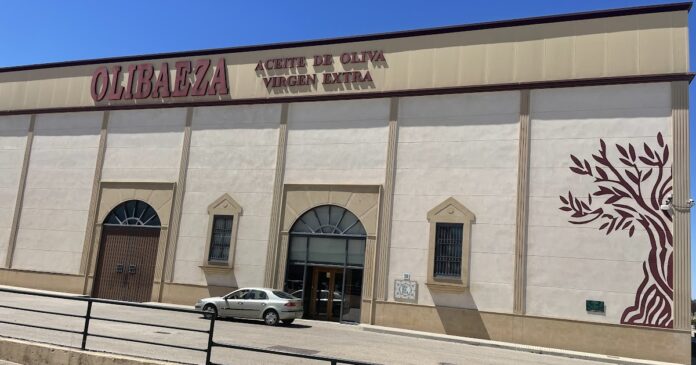The first stop in our summer holidays in August was Jaén and more specifically Baeza, where we made a Turistour to visit the El Alcázar Cooperative, in order to know the facilities and the process of obtaining its famous Olibaeza oil. There we enjoyed a pleasant guided tour throughout the cooperative where we were able to see and learn about the whole process of obtaining their EVOO while we were instructed each and every part of their facilities as well as machinery and even sales process.The cooperative is made up of around 1,000 members who bring their entire production of Picual olives (in Jaén the Picual variety is the most common) to the cooperative (the number of olives is around 600,000). Production is around 30 million kg of olives and in some years has even reached 40 million. With the drought, last year they only had about 10 million and this year’s crop is expected to be similar to last year’s or even smaller if there is no rain before the end of September. The average production of kg of oil is around 800,000kg, of which around 60,000kg are bottled for sale to members and the general public under the Olibaeza brand and the rest is sold in bulk to large bottling companies, such as La Masía, and exported to other countries such as Italy.Regarding the facilities, as you can see in the photos, we could see the process from the moment the olives enter one of the 12 unloading lines until they are bottled and/or stored in the tanks. The process that the olive goes through is as follows:The olives are unloaded, associate is identified, indicating the partner data along with the field where the olives come from and the production is labelled with this information for traceability. The olives are cleaned in passing by turbines with air and rainwater and then stored in the hoppers (each unloading line has 4 hoppers).The olives pass through the mill, which generates the paste (in total they have about 20 mills).The paste passes through the beater, where the EVOO begins to be extracted thanks to centrifugal force and the application of different temperatures depending on the quality of the oil to be obtained.Drinking water is added to the extracted oil in order to clean it and again the water is extracted by difference of densities, even so it is stored in decanter tanks to eliminate any remaining water from the process.Once the decanting process is finished, the oil is stored in the tanks.The bottled oil is filtered to remove any solid residues (pieces of bone or remains of paste) and if it is sold in bulk, it leaves the cooperative directly from the customers’ tanks.One of the things they also highlighted during the visit was the oil they obtain from the early harvest (October). This oil is obtained from very selected olives, harvested at a specific time, preferably in the morning, and the EVOO extraction process is carried out cold, i.e. at room temperature and produced in the same day of the harvesting. This is how they obtain the gourmet EVOO that they sell under their brand Olibaeza.Finally, the olive pits are used to generate energy (a large part is sold for biofuel) and rainwater is collected (in 200,000 litre tanks) and stored for use in cleaning the machines and in the phytosanitary treatments that the members carry out in the fields throughout the year.
Versión en español.
